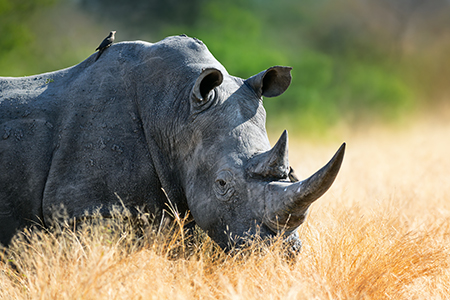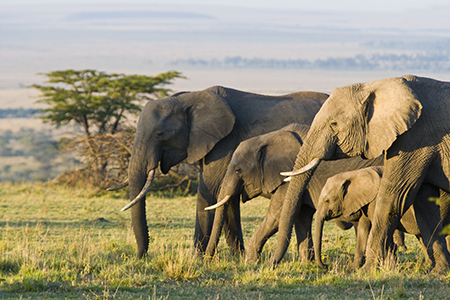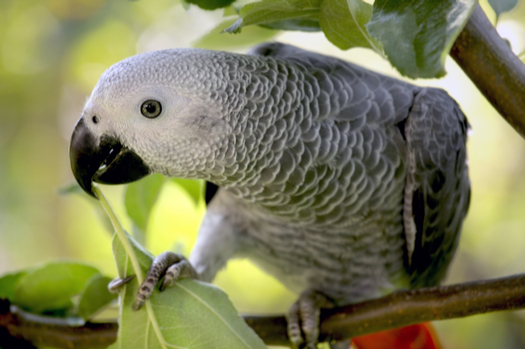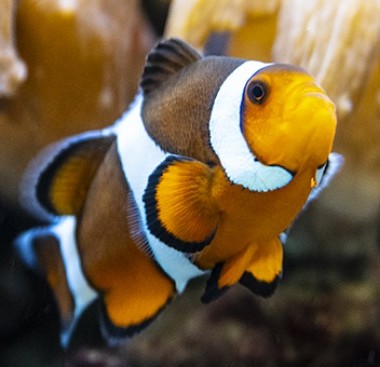March 2022 CITES and USFWS CITES Delegation Report
By: Art Parola Date: 03/31/2022 Category: | Animal Legislation |
By Art Parola
The NAIA CITES engagement program has been dormant for some time now. However, it has become increasingly clear that advocates for the human-animal bond and sustainable use policy of wildlife resources are vastly underrepresented in CITES decision making processes. NAIA is excited to announce the recommencement of our CITES engagement program. In this initiative, NAIA will act as an observer to monitor government and NGO actions and advocate for legal and sustainable wildlife trade that promotes conservation, empowers people, and protects the human-animal bond. Because the impact of CITES issues differs throughout our membership, some of our more in-depth communications will be prioritized to NAIA members and associates with direct interest in CITES specific issues. Please reach out to us if you have any questions or matters you would like to discuss.
On March 7, 2022, U.S. Fish & Wildlife Service (USFWS) published a notice in the Federal Register detailing public comments USFWS has received from individuals and organizations regarding Convention on the International Trade in Endangered Species (CITES) Standing Committee meeting, held March 7-11, 2022, in Lyon, France, and the upcoming Conference of the Parties (CoP), to be held November 14-22, 2022, in Panama City, Panama. Included in the notice were USFWS’s responses to those comments, and potential actions and positions USFWS has and is considering.
A significant percentage of the comments submitted to the US government came from organizations with the primary concern of promoting radical western animal rights agendas as well as organizations with an environmental focus that are heavily influenced by their animal rights peers and share similar ideologies. While the CITES treaty is intended to regulate trade in wildlife to prevent wildlife resources from becoming threatened with extinction, the goal (stated or not) of many of the NGOs currently involved with CITES is to eliminate all trade in wildlife and wildlife products. These organizations have become increasingly effective at pushing their agenda, both directly at CITES conferences and meetings and indirectly by influencing governments in their respective countries.

Several topics included in the notice were of particular importance and have the potential to create major impacts on the Treaty and individuals, organizations, and species affected by CITES regulation. These topics were zoonotic disease, a proposal for a gender action plan, determinations of appropriate and acceptable destinations, utilization of the precautionary principal, proposal of a candidate species listing tool, and a proposal for a total prohibition of the wildlife trade.
In the wake of Covid-19, zoonotic disease has become more heavily scrutinized. Governments, often under pressure from the severe economic impacts of the pandemic and related policies, are highlighting actions intended to stem current zoonoses outbreaks or prevent new ones. Several comments were submitted encouraging support for CITES to be used to combat zoonotic disease. In response to public comments on the zoonoses issue, the US government stated its position supporting CITES involvement in this area, presumably through expanding the Treaty’s regulatory authority. The US government is currently a member of the intersessional working group that will make recommendations and likely co-author a proposal for adoption at the upcoming CoP.
Unfortunately, using CITES to regulate trade based on perceived zoonotic risk would be ineffective, add unnecessary complexity, and divert resources away from the Treaty’s primary mission. Historically the primary-pathway of international transport for zoonotic disease has not been the wildlife trade, but human travel, particularly in today’s age of widely assessable international air transport. Despite the absence of evidence of effectiveness and further economic harm of such actions, curtailing wildlife trade has become a primary method for governments to show they are “doing something.” It is likely there will be significant support for CITES to expand its regulation of the wildlife trade based on perceived zoonoses risk. Thus, it will be vital for stakeholders to voice that the CITES framework is not designed for and will not be effective in preventing outbreak and spread of zoonoses. Attempting to prevent zoonoses under CITES will simply create additional bureaucracy and divert resources from the primary purpose of the Treaty. While enhanced biosecurity regulation may be necessary in certain situations around the world, CITES is not the correct avenue to address such issues. Domestic laws can address biosecurity more precisely and effectively without undermining the intent of CITES.
Ironically, while the US government pushes for ineffective and counterproductive expansion of CITES jurisdiction to regulate zoonoses risk, it has failed in its duty to implement effective domestic policy, particular regarding screening the millions of domestic dogs that are imported into the country every year. Unregulated dog imports into the United States are a primary pathway for numerous pathogens that are not historically present in the country. These include diseases such as previously eradicated strains of rabies that have serious implications for human health and canine influenza strains that have killed thousands of US pets. While the US government has been slow to act on this problem, legislation to solve the issue is currently pending. (For more information see: Healthy Dog Importation Act)
In the same vein of expanding CITES jurisdiction to areas for which the Treaty is not intended for and designed to address, an NGO recommended the US propose an agenda item to create a “gender action plan” and claims CITES could benefit from efforts to promote gender equality, specifically in enforcement, decision-making and implementation of the Treaty. The US government responded that how they will address this issue is still undecided, but it is the position of the US government to consider gender issues in the context of CITES capacity building.
Considering gender issues when dispensing government initiatives and aid may indeed have value in sustainable development. Gender equality is goal number five of the United Nations Goals for Sustainable Development and undoubtably is worthy of attention and resources. However, it is unclear how CITES could be utilized to promote this goal and how any initiatives would benefit the purpose of CITES. While there may be a place for encouraging the promotion of gender equality initiatives through individual actions of Parties to the Treaty, an attempt to incorporate broadscale gender equality initiatives into the overarching CITES framework would likely add significant bureaucracy with limited benefit. The United Nations has many programs designed to promote gender equality which would achieve the same results without the need for CITES to focus resources in this area.
Of serious concern is the push for CITES to consider “appropriate and acceptable destinations” in quota and permit processes. Currently this issue is centering mainly on proposed exports of African elephants and southern white rhinos for zoological purposes. The push attempts to switch the lens of CITES from a focus on mitigating threats to wild populations, to one of being arbiters of what uses of wildlife resources are moral. In this, CITES reaches far beyond determining whether trade is nondetrimental to wild populations.
 Currently, CITES is creating two sets of non-binding guidelines. The first would be used to determine whether exports would benefit conservation of in-situ populations. The second would be used to determine if recipients can provide suitable housing and care. While guidelines are currently non-binding, the door has been opened for CITES to radically broaden the scope of its authority.
Currently, CITES is creating two sets of non-binding guidelines. The first would be used to determine whether exports would benefit conservation of in-situ populations. The second would be used to determine if recipients can provide suitable housing and care. While guidelines are currently non-binding, the door has been opened for CITES to radically broaden the scope of its authority.
Giving CITES the authority to determine what amounts to appropriate and acceptable uses of wildlife resources has the potential to result in destruction of traditional livelihoods, disregard for local belief systems, and blatant enforcement of notions of cultural superiority. Nations should be free to set their own standards for what is and is not acceptable in utilization of their wildlife resources. A centralized world body governing such determinations fails to respect diversity of cultures, local livelihoods, and belief systems and undermines national sovereignty of Parties to the Treaty. So long as nondetrimental findings are valid, nations should be free to determine what use conditions are placed on their wildlife resource exports.
NGO comments recommended the US government take the position that there is no conservation benefit to taking elephants from the wild to place in zoos. The US government replied it was undecided on what position it would take on the issue. While the assertion that wild elephants in zoos have no conservation value is questionable at best, it is more importantly irrelevant for the purposes of CITES. The Treaty seeks to ensure trade does not pose a detriment to wild populations. If this standard is met, the purpose of the Treaty is fulfilled. At that point, it should be the prerogative of the exporting and importing nations to determine conditions (or lack thereof) of use of the wildlife resources.
While the US government is currently taking an agnostic stance regarding how CITES should handle the appropriate and acceptable destination issue, it has taken a rigid position in opposing opening and regulating legal international markets for currently banned wildlife and wildlife products. The US government position is there is no conservation benefit to limited regulated trade in these cases.
The US government’s position ignores countless examples of regulated legal trade all but eliminating black market trafficking by reducing incentives for poaching. Species ranging from tarantulas to alligators have benefited from implementation of sustainable use policy as opposed to trade bans. Ironically, for many of the currently banned species in question, illegal trade has remained a problem or even increased as scarcity created by the trade bans has pushed prices up and incentivized poaching and trade by black market players. Uplisting the African grey parrot (Psittacus erithacus) from CITES Appendix II to Appendix I and the resulting ban in trade of wild birds resulted in an increase in illegal poaching of the species from the wild. After seahorses (Hippocampus sp.) were listed under CITES, data from India showed an increase in exports even though trading in these species had become a violation of law. Despite the widespread success of sustainable use policy and the numerous failures of restrictive trade bans, the US government continues to double down on a faulty view that may sound good in theory but continually fails in practice.
 In response to a comment on the precautionary principal, the US government stated its support of utilizing the principal. Unfortunately, reliance on the precautionary principal tends to lead to poor management decisions. One prominent and egregious example occurred at the most recent CoP in 2019, where the US supported the listing of the tokay gecko (Gekko gecko) on the appendices. The species is an anecdotally common lizard with a wide range throughout southeast Asia. It is utilized as a food animal and in the pet trade. The species is designated “Least Concern” by the International Union for the Conservation of Nature (IUCN) Red List. CITES documents specifically stated reliable population data for the species did not exist and presented no evidence of overall population declines. However, with significant support from the US government, and almost no time given for discussion and the debate when the proposal was brought to the floor, Parties voted to list the species on appendix II based solely on the precautionary principal.
In response to a comment on the precautionary principal, the US government stated its support of utilizing the principal. Unfortunately, reliance on the precautionary principal tends to lead to poor management decisions. One prominent and egregious example occurred at the most recent CoP in 2019, where the US supported the listing of the tokay gecko (Gekko gecko) on the appendices. The species is an anecdotally common lizard with a wide range throughout southeast Asia. It is utilized as a food animal and in the pet trade. The species is designated “Least Concern” by the International Union for the Conservation of Nature (IUCN) Red List. CITES documents specifically stated reliable population data for the species did not exist and presented no evidence of overall population declines. However, with significant support from the US government, and almost no time given for discussion and the debate when the proposal was brought to the floor, Parties voted to list the species on appendix II based solely on the precautionary principal.
Incidents such as this are becoming more and more common. The precautionary principal sets a burden of proof standard that can be almost impossible to meet. This has led to requests of range states to be ignored, particularly when those countries are less wealthy and less developed. When such nations have appealed for creating opportunities for legal regulated trade, increasing quotas, or even maintaining quotas, the precautionary principal is often invoked to prevent such actions. The use of the precautionary principal is widely promoted by western animal rights groups as it is useful in setting impossible standards to meet and therefore allows them to enforce their agenda on nations and people who would otherwise manage and utilize their wildlife resources.
One commenting organization suggested the US propose a formal candidate-species listing tool, ostensibly to give NGOs a process to push species to be included under the CITES appendices. The US government responded it would be unlikely to make such a proposal at the next CoP as there are already mechanisms for Parties to the Treaty to make proposals.
A commenting organization urged the US government to submit a proposal seeking a total prohibition on the wildlife trade. The US government responded stating “we recognize and support the purpose of CITES in regulating trade in listed species to ensure it is legal, does not threaten the survival of species in the wild, and that any use of wildlife and plants in trade is sustainable.” It is significant the US government clearly states its support for legal, nondetrimental, and sustainable trade of wildlife resources. However, as stated, it should be noted the US government has also opposed allowing trade in species even when that trade would meet these criteria.
CITES is currently experiencing significant mission drift that would dramatically expand the scope of the Treaty. Disease prevention, gender issues, and determining morality of how wildlife resources are utilized once removed from wild populations are far beyond the intended scope of the Treaty at its inception almost 50 years ago. Combined with an overreliance on the precautionary principal, a distorted view of the economics of market forces, and the substantial influence on decisions by organizations with the goal of reducing or eliminating commercial use of wildlife resources, the effectiveness of CITES as a framework to promote conservation and sustainable development has become endangered. Increased participation by legitimate stakeholders, at both national and international levels, is necessary to ensure CITES is successful in its original intent to promote sustainable development and protect biodiversity.
Stakeholders will have the opportunity to present input at a public meeting at a still to be determined date two to three months prior to the CoP. Public comments are also accepted through the Federal eRulemaking Portal and by U.S. Mail. NAIA will be engaged throughout the process and will be working closely with our members to ensure your interests are adequately represented.

Art Parola developed a love of nature from a young age, spending as much time as he could, covered in mud and creek water, with a butterfly net chasing every critter that crawled, slithered, or swam and trying to identify them with his collection of field guides. This led him to a career path focused on animal welfare, sustainable development, and conserving nature, particularly through sustainable use policy initiatives. He is currently a consultant while pursuing a law degree. He still hasn’t lost his childhood enthusiasm for spending time in nature, although he now more commonly carries a camera instead of a net. His writing and photographs have appeared in numerous online articles, as well as in print publications in multiple countries around the world.
About The Author
All Authors Of This Article: |












